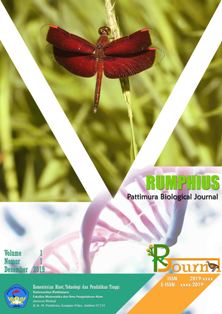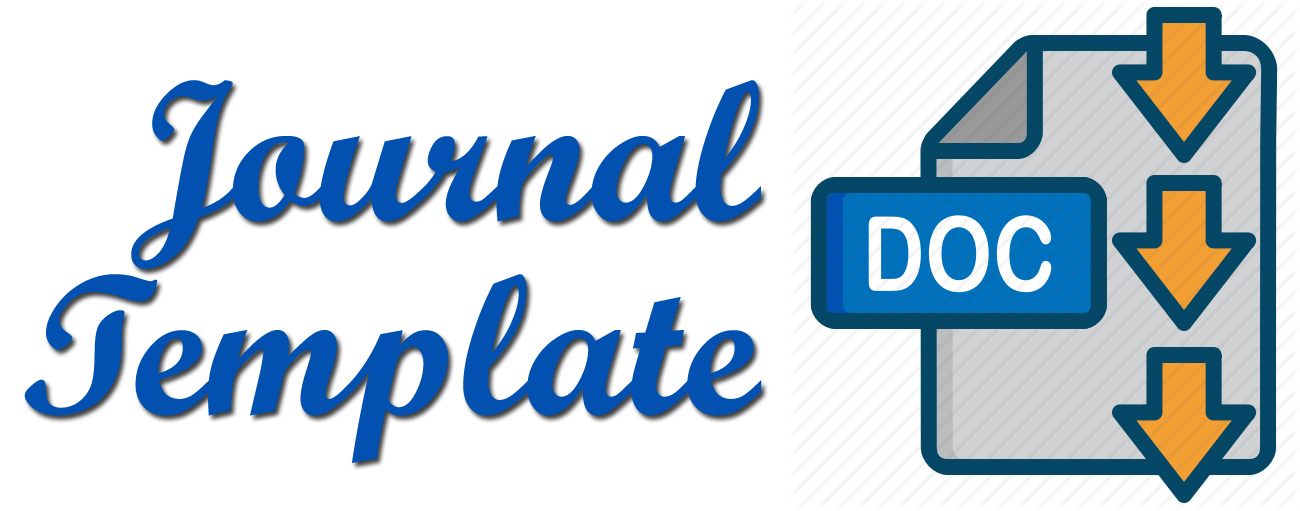EVALUATION OF TEA HERBAL BASED INGREDIENTS CLOVE LEAVES (Syzygium aromaticum) OF MALUKU INDONESIA
Abstract
Clove (Syzygium aromaticum) is one of the famous ancient spices and was used before christ. This plant belongs to the Myrtaceae family which is believed to be able to treat a variety of diseases. Cloves grow in tropical areas and range in height from 10-20 meters and are native plants that originated in Maluku. Clove that can be processed into a drink such as one is to make herbal tea from clove leaves. The type of research used is the experimental type, which is a study conducted to determine the results of organoleptic tests and compunds on clove leaf herbal tea. This research was conducted from July 29 to August 9, 2024 at the Basic Biology laboratory of Pattimura University. The results of the study showed that clove leaf herbal tea has a unique color, aroma and taste and meets quality standards because it has been tested at the level of color, aroma and taste preference. In the color of clove leaf herbal tea, it can be seen that the one ( very like) consists of 7 panelists, the result (like) consists of 3 panelists. Aroma it can be seen that for those who answered (very liked) consisting of 5 panelists, the result of the score (like) consisted of 1 panelist and the result (moderately) consisted of 4 panelists. For the results of the taste score, it can be seen that (very liked) consisted of 1 panelist, the result of the score (liked) consisted of 4 panelists, and the result of the score (moderate) consisted of 4 panelists and for the result of the score (disliked) consisted of 1 panelist.
The results of the study showed that clove leaf herbal tea has a unique color, aroma and taste and meets quality standards because it has been tested at the level of color, aroma and taste preference. In the color of clove leaf herbal tea, it can be seen that the one ( very like) consists of 7 panelists, the result (like) consists of 3 panelists. Aroma it can be seen that for those who answered (very liked) consisting of 5 panelists, the result of the score (like) consisted of 1 panelist and the result (moderately) consisted of 4 panelists. For the results of the taste score, it can be seen that (very liked) consisted of 1 panelist, the result of the score (liked) consisted of 4 panelists, and the result of the score (moderate) consisted of 4 panelists and for the result of the score (disliked) consisted of 1 panelist.
Downloads
References
Alrashdi, D. Y. B. A., & Hossain, D. M. A. (2023). Review on Phytochemicals and Pharmacological Activities of Syzygium aromaticum. Infection Epidemiology and Microbiology, 9(1), 87-97.
Astuty, E., Luhulima, V. D., & Ariwicaksono, S. C. (2024). Antibacterial Potential of Endemic Medicinal Plants of the Maluku Islands, Indonesia, against Urinary Tract Infection Pathogens. Folia Medica Indonesiana, 60(3), 240-248.
Dong, X. (2024). Pharmacological Effects of Aromatic Medicinal Plants: Comprehensive Analysis of Active Ingredients and Mechanisms of Action. Medicinal Plant Research, 14.
Husen, R. A., Zulkarnain, Z., Sary, N. L., Harnelly, E., & Husna, F. (2024). The Potential of Clove (Syzygium aromaticum) Essential Oil as Sunscreen and Anti-Aging Agents: An In Vitro and In Silico Study. Trends in Sciences, 21(10), 8209-8209.
Idowu, S., Adekoya, A. E., Igiehon, O. O., & Idowu, A. T. (2021). Clove (Syzygium aromaticum) spices: A review on their bioactivities, current use, and potential application in dairy products. Journal of Food Measurement and Characterization, 15, 3419-3435.
Marasabessy, A., Pesik, A., & Kakisina, P. (2024). Morphological and molecular phylogeny of clove (Syzygium aromaticum L.) from Haya Village, Seram Island, Indonesia. SABRAO J. Breed. Genet, 56(5), 2015-2025.
Nusaly, W. N., Watuguly, T. W., Pattiasina, E. B., & Wael, S. (2023). Identification of medicinal plants and benefits in and benefits in the village of negeri lima, maluku district. BIOPENDIX: Jurnal Biologi, Pendidikan dan Terapan, 10 (1), 156-170.
Otunola, G. A. (2022). Culinary spices in food and medicine: an overview of Syzygium aromaticum (L.) Merr. and LM Perry [Myrtaceae]. Frontiers in Pharmacology, 12, 793200.
Ramadan, M. F. (Ed.). (2022). Clove (Syzygium aromaticum): Chemistry, Functionality and Applications. Academic Press.
Rahmawati, R., Pratiwi, Y. S., Sanjaya, Y. A., & Amalia, T. (2024). Characterization of A Mixed Tea Formulation of Mangosteen Peel, Cinnamon, and Clovers. Agroindustrial Technology Journal, 8(1), 43-59.
Surya, R., Romulo, A., Nurkolis, F., & Kumalawati, D. A. (2024). Compositions and Health Benefits of Different Types of Jamu, Traditional Medicinal Drinks Popular in Indonesia. In Natural Products in Beverages: Botany, Phytochemistry, Pharmacology and Processing (pp. 307-339). Cham: Springer International Publishing.
Wael, S., Watuguly, T. W., & Wahyudi, D. (2018). Effect of Leaf Syzygium aromaticum on Lymphocytes and Macrophages Mice Balb/c. Majalah Obat Tradisional, 23(2), 79-83.
Wael, S., Leiwakabessy, F., Mose, W., & Watuguly, T. W. (2023). Potential of clove extract (syzygium aromaticum) on spermatozoa rats (sprague dawley) exposed to arak ambon (sopi). Biopendix: Jurnal Biologi, Pendidikan dan Terapan, 9(2), 211-221.
Wael, S., Watuguly, T. W., Arini, I., Smit, A., Matdoan, N., Prihati, D. R., & Astuti, P. (2018). Potential of Syzygium aromaticum (Clove) leaf extract on immune proliferation response in Balb/c mice infected with Salmonella typhimurium. Case Reports in Clinical Medicine, 7(12), 613-627.
Wael, S., Nuringtyas, T. R., Wijayanti, N., & Astuti, P. (2018). Secondary metabolites production in clove (Syzygium aromaticum): chemical compounds.
Watuguly, T. W., Leiwakabessy, F., Rehena, J. F., Mose, W., & Wael, S. (2022). Prevention of breast cancer with the breast self-examination method (BSE) in the Negeri Lima village, Leihitu District, Maluku Province. BIOEDUPAT: Pattimura Journal of Biology and Learning, 2(2), 32-36.
Copyright (c) 2024 Marsya Elsina Letlora, Alifia Audy Baharudin, Syahran Wael, Zaid Mohamad Jaber, Johanis Fritzgal Rehena

This work is licensed under a Creative Commons Attribution-NonCommercial-ShareAlike 4.0 International License.
Authors who propose a manuscript and have it approved for publication know that the manuscript will be registered and become part of the RPBJ. Authors and readers understand that this journal is open and all its contents can be accessed freely, provided that RPBJ is still listed as the source of information. The hope is that this journal can become a vehicle for exchange and scientific knowledge for society and the scientific community, especially in the field of Biology and other branches of science.









